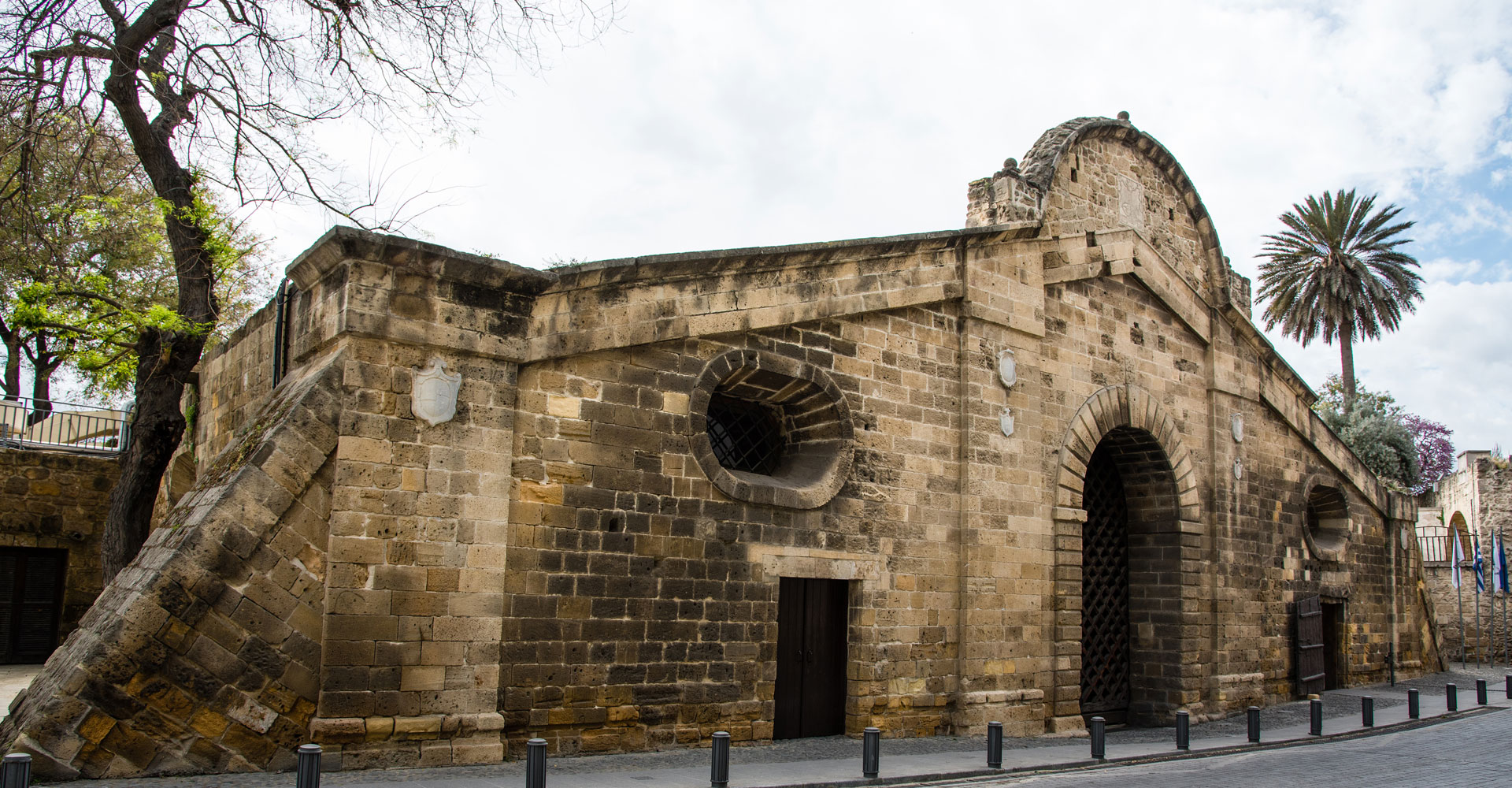
Πύλη Αμμοχώστου – Επαρχία Λευκωσίας
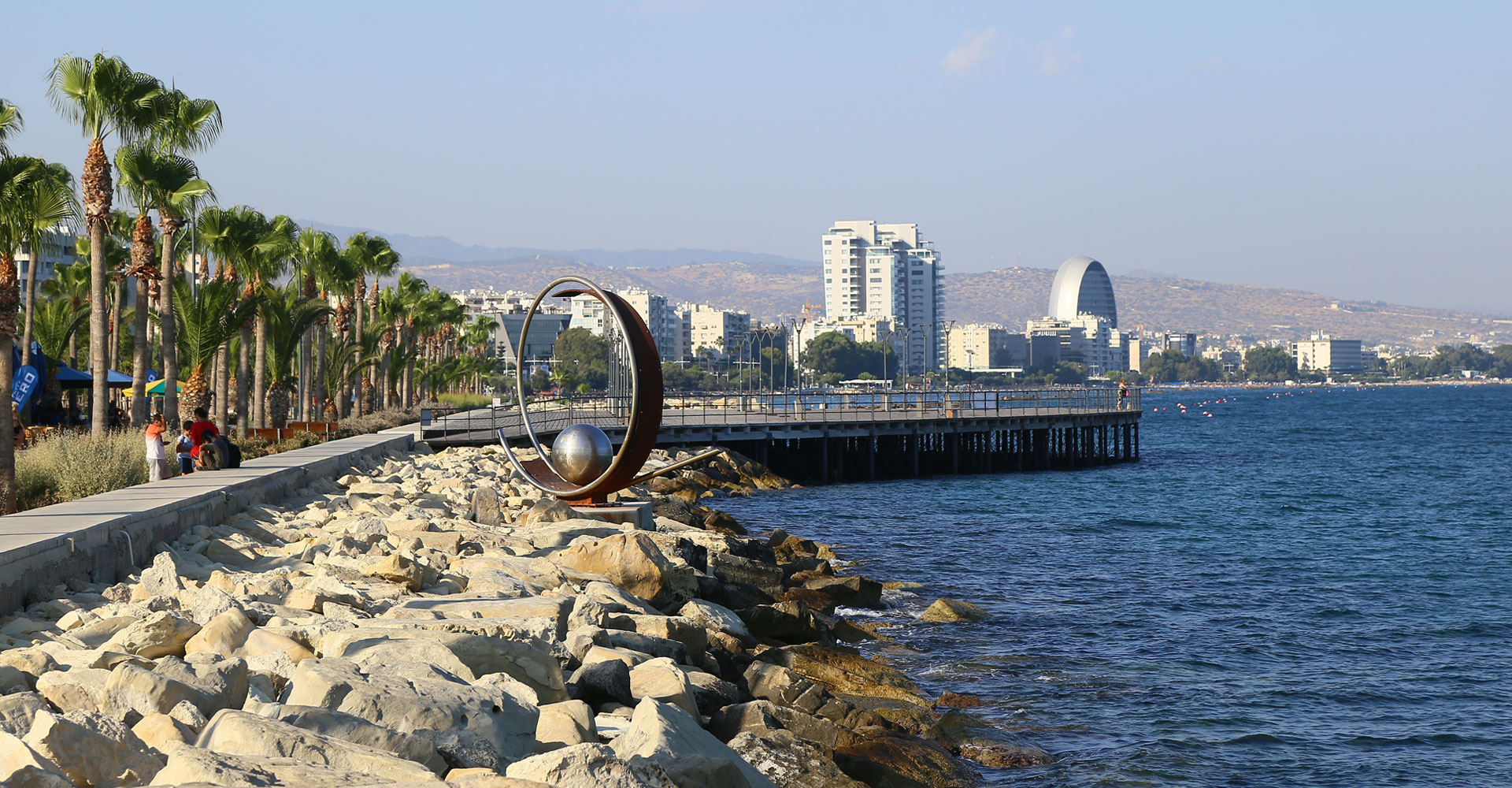
Παραλιακό μέτωπο – Επαρχία Λεμεσού
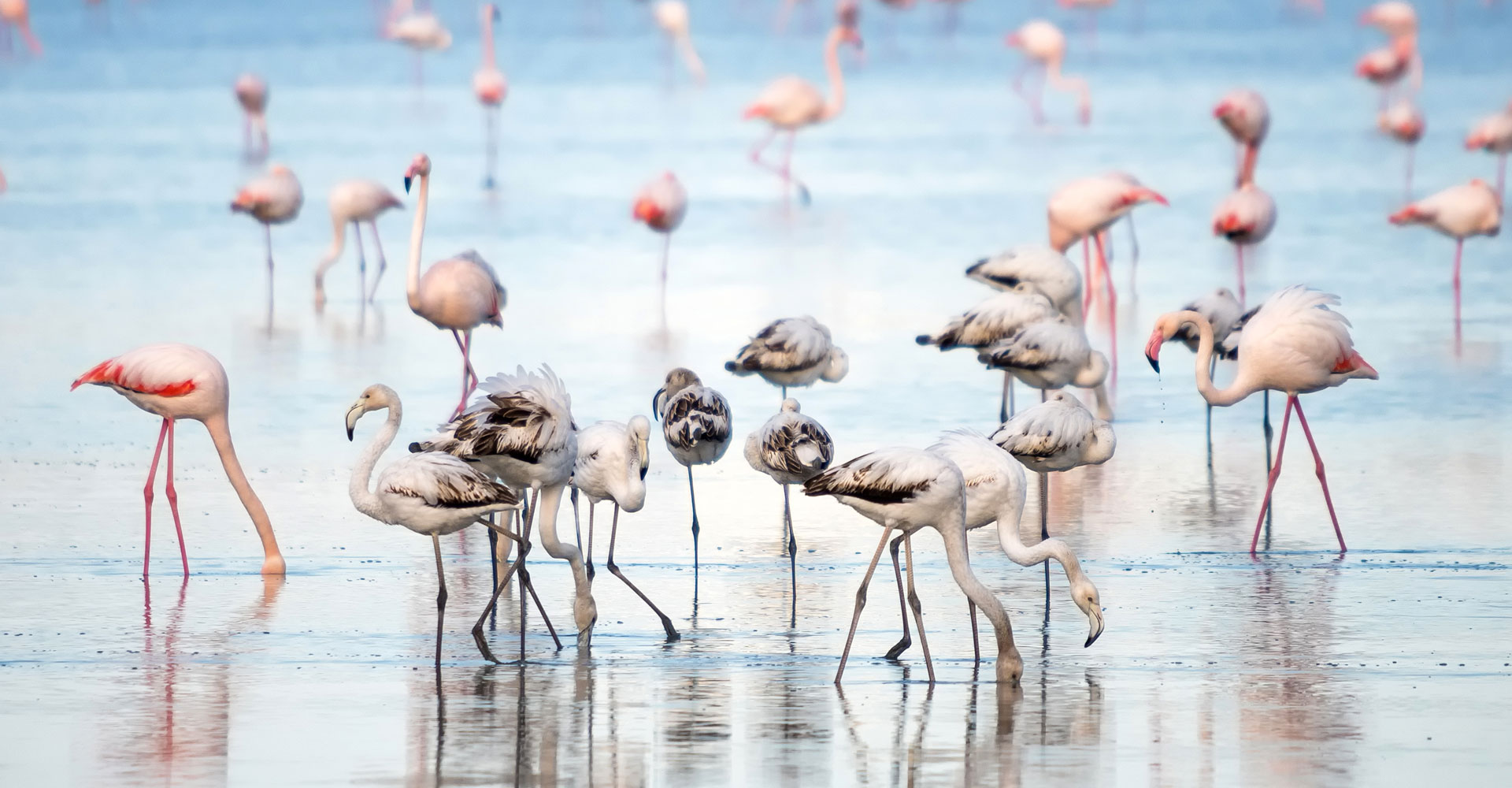
Λίμνη Αλυκής – Επαρχία Λάρνακας
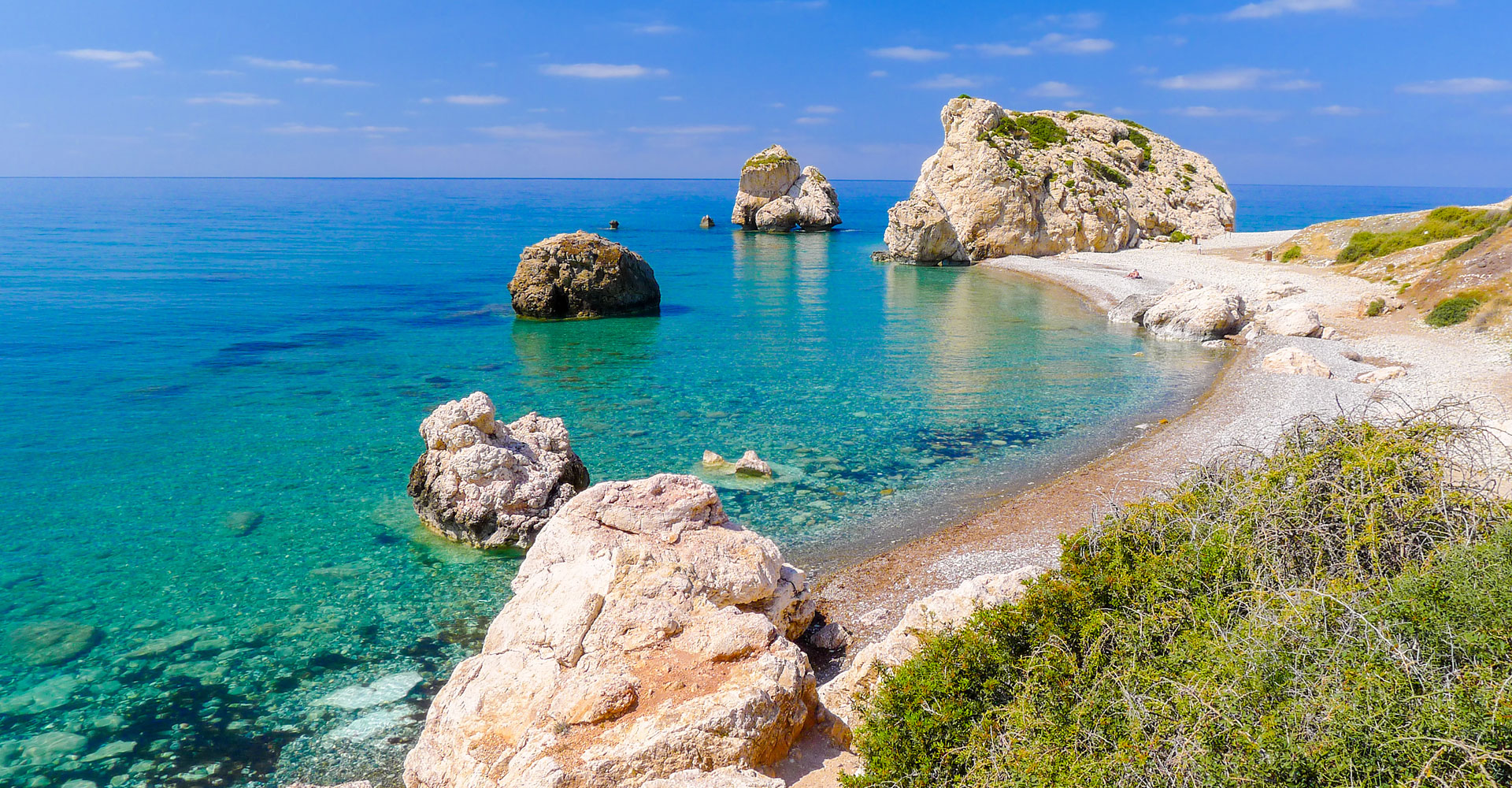
Πέτρα του Ρωμιού – Επαρχία Πάφου
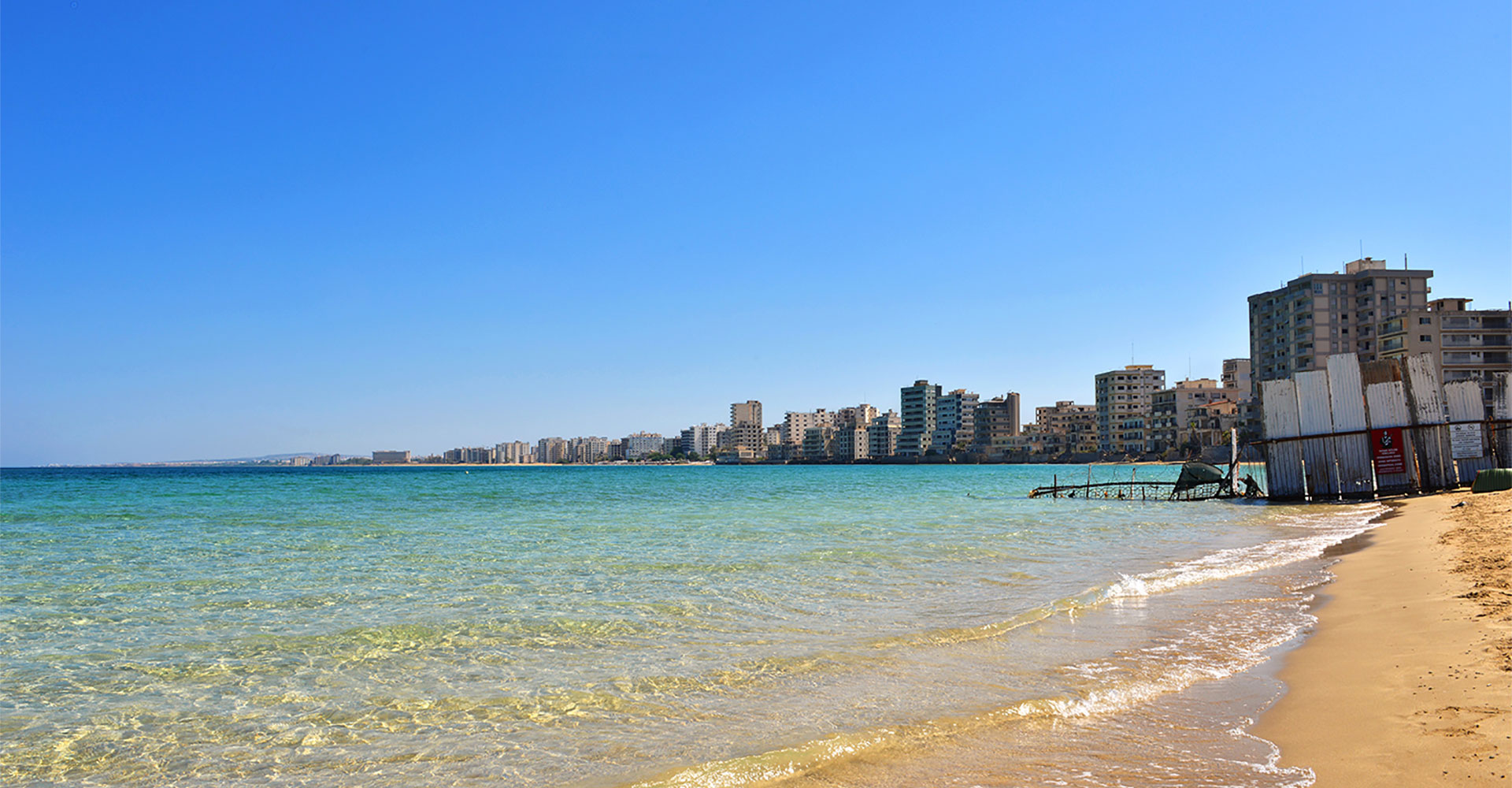
Παραλία Πόλης Αμμοχώστου - Επαρχία Αμμοχώστου
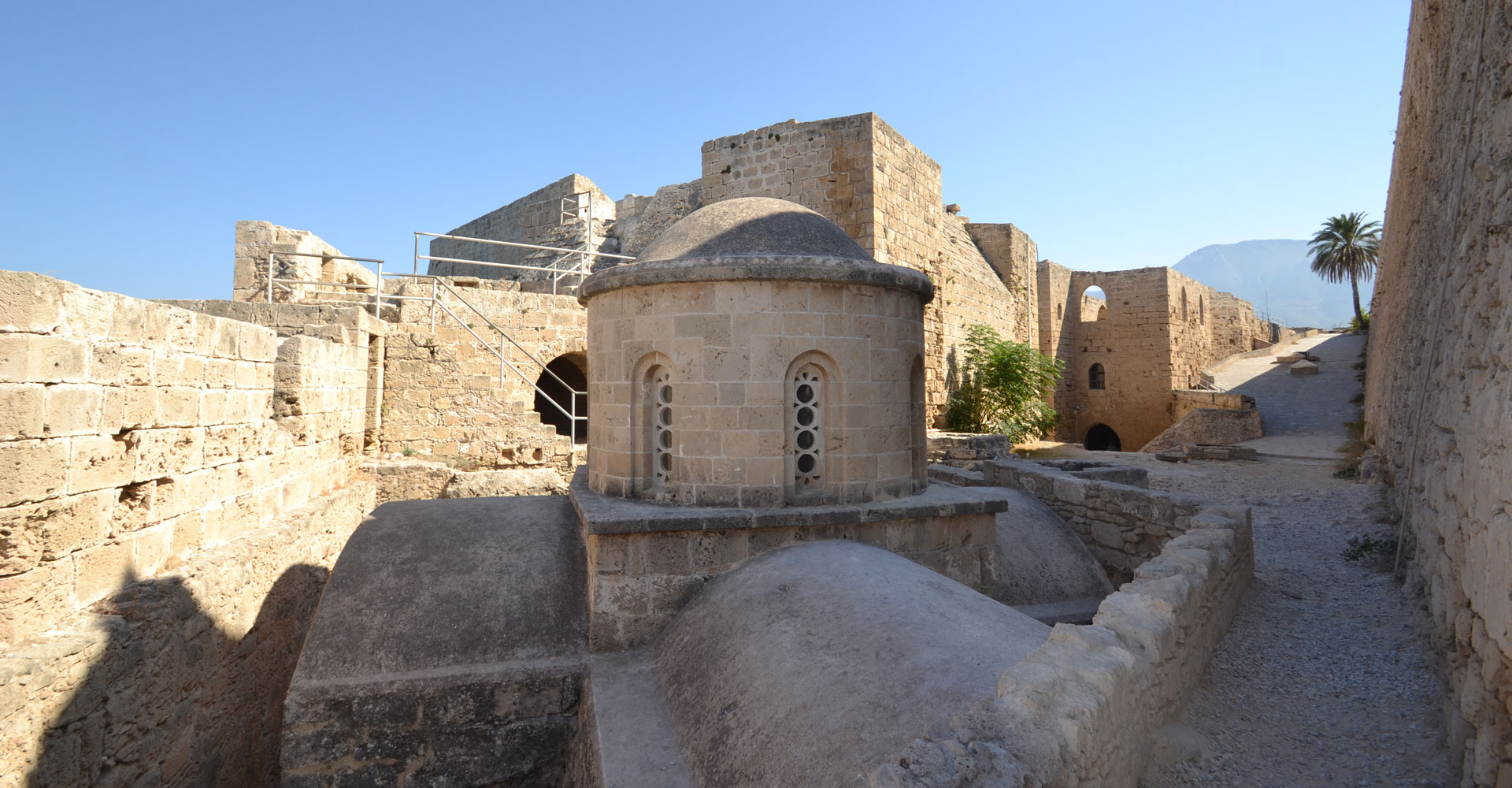
Κάστρο της Κερύνειας – Επαρχία Κερύνειας

Akanthou
Contact Details
Municipality under turkish occupation since 1974
P.O.Box: 42291
6532 Larnaca
Cyprus
Mayor: Eleni Hadjimichael
Tel.: +357 24623566 , +357 24635578
Fax: +357 24815008
Email: akathou@cytanet.com.cy
Website: http://www.akanthou.org.cy
A few words
The beautiful village of Akanthou, is located at the northern coast of Cyprus. Administratively the township belongs to the district of Ammochostos (Famagusta). Akanthou lies at the foot of mount Pendadaktylos overlooking the unique coastline of the Kyrenia district. Akanthou haw been under Turkish occupation since 1974, following the invasion of the island of Cyprus by Turkish. As part of their policy to change the demographic character of all occupied areas, the illegal Turkish authorities have changed the historic name of the village to “Tatlisou”. The lawful, indigenous citizens of the occupied township now live as refugees, (5,000 thousand before 1974) scattered over the government controlled areas of the island and overseas. They live with the hope that one day they will be able to return to their beloved village, their homes and properties.
The hills overlooking the village have unique features and were given various names according to their shapes. Such beautiful features are “The Stylarka”, “Thkiatripito” and “The Waterfalls”.
There were 22 small churches in the area of Akanthou and they all had the same fate like everything that was Greek or Christian after the Turkish invasion. The most violent desecration and destruction was suffered by the Church of Our Saviour which was the pride of Akanthou. The Church is an architectural monument built by the villagers and took 20 years to complete. The church was dedicated to the “Transfiguration or our Saviour” celebrated on the 6th of August each year and thousands of people from all over the island visited the village to pay homage to the Our Lord. The Church was one of the most wealthy and magnificent churches on the island.
Akanthou is one of the oldest municipalities in Cyprus. It had its own Mayor since 1908 and a Municipal Council. The then British High Commissioner was so impressed with the cultural standard, the hospitality and progressive spirit of the people of the village he recommended the establishment of the Municipality of Akanthou.
Today the Municipality of Akanthou is hospitalize to Larnaca.
At a glance
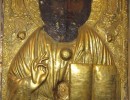
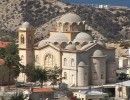
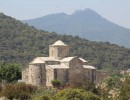
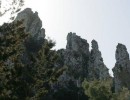
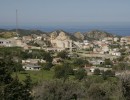
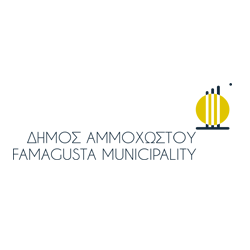
Ammochostos
Contact Details
Municipality under turkish occupation since 1974
P.O.Box: 51682
3507 Lemesos
Cyprus
Mayor: Simos Ioannou
Tel.: +357 25384073
Fax: +357 25386969
Email: ammochostos.famagusta.municipality@cytanet.com.cy
info@famagusta.org.cy
Website: http://www.ammochostos.org.cy, http://www.famagusta.org.cy/
A few words
Τοποθεσία
Η Αμμόχωστος είναι μια από τις έξι πόλεις της Κύπρου και πρωτεύουσα της ομώνυμης επαρχίας. Κτισμένη στον ομώνυμο κόλπο με την εξαιρετικής ομορφιάς αμμουδιά, πήρε το όνομα Αμμόχωστος ως πόλη χωμένη στην άμμο. Η γεωγραφική της θέση με τα πολλά πλεονεκτήματα συνέτεινε στο να εξελιχθεί η πόλη σε σπουδαίο λιμάνι και κέντρο εμπορίου καθώς και κέντρο γενικότερων σχέσεων της Κύπρου με τη Μέση Ανατολή.
Η ιστορία της πόλης
Έγκωμη (16ος – 12ος αιώνας π.Χ.)
Στις αρχές του 16ου αιώνα π.Χ. στην ανατολική Κύπρο, στις εκβολές του Πεδιαίου ποταμού δημιουργείται η Έγκωμη, μια μικρή πολιτεία η οποία εξυπηρετεί τις ανάγκες του κοντινού λιμανιού που ασχολείται με την εξαγωγή του χαλκού. Λειτουργούν εργαστήρια επεξεργασίας του χαλκού. Τη φήμη και τη ζωή της Έγκωμης εξιστορούν τόσο οι αρχαιολογικές ανασκαφές όσο και οι ιστορικές πηγές. Η Έγκωμη εγκαταλείπεται σταδιακά στο τέλος του 12ου αιώνα π.Χ.
Σαλαμίνα (11ος – 3ος αιώνας π.Χ.)
Η Σαλαμίνα, η πόλη του Τεύκρου, είναι η ενδοξότερη κυπριακή πόλη. Είναι η απόδειξη της ύπαρξης και της εγκατάστασης των Αχαιών στην Κύπρο, αλλά και η περίοδος των τριών αιώνων κατά την οποία διαμορφώθηκαν τα πρώτα κυπριακά βασίλεια.
Μια από τις πιο σημαντικές προσωπικότητες της αρχαιότητας στο νησί ήταν ο βασιλιάς της Σαλαμίνας Ευαγόρας ο οποίος σύμφωνα με τον Ισοκράτη, ήταν «άξιος να βασιλεύει όχι μόνο της Σαλαμίνας αλλά και της Ασίας όλης».
Επαναστάτησε ενάντια στους Πέρσες και αποκατέστησε την ελληνική εξουσία στη Σαλαμίνα το 411 π.Χ., ενώ έντονη ήταν η προσπάθειά του να ενώσει όλα τα κυπριακά βασίλεια. Ακολούθησε μια πολιτική εξελληνισμού του νησιού και ήταν ο Ευαγόρας που εισήγαγε στην Κύπρο το ελληνικό αλφάβητο. Το βασίλειο της Σαλαμίνας που ιδρύθηκε τον 11ο αιώνα έπαψε να υφίσταται τον 3ο αιώνα, όταν η Κύπρος προσαρτήστηκε στο Πτολεμαϊκό βασίλειο της Αιγύπτου.
Αρσινόη
Μετά την καταστροφή της Σαλαμίνας από σεισμούς, ο Πτολεμαίος Β΄ ο Φιλάδελφος ίδρυσε μετά το 274 π.Χ. στην Κύπρο τρεις πόλεις που έφεραν το όνομα της αδελφής του Αρσινόης εκ των οποίων η μια στα νότια τις Σαλαμίνας.
Κωνσταντία
Η ολοκληρωτική καταστροφή της χριστιανικής πια Σαλαμίνας από σεισμούς ήλθε το 332 και το 342 μ.Χ. Ο Κωνστάντιος, ένας από τους τρεις γιους του Μεγάλου Κωνσταντίνου, αναστήλωσε και πάλι την πόλη και τη μετονόμασε σε Κωνσταντία, η οποία αναπτύχθηκε σε πολιτική και εκκλησιαστική πρωτεύουσα της Κύπρου.
Στα μέσα του 7ου αιώνα αρχίζουν οι αραβικές επιδρομές που επιφέρουν την καταστροφή της Κωνσταντίας και την ολοκληρωτική εγκατάλειψή της και μετοίκηση του πληθυσμού προς ασφαλέστερη περιοχή νοτιότερα της Αρσινόης.
Αμμόχωστος
Λίγα γνωρίζουμε για την ίδρυση της πόλης. Από τον 3ο αιώνα μέχρι περίπου το 1200 μ.Χ. υπάρχει ένα κενό στις ιστορικές γνώσεις για την ίδρυση και τη δημιουργία της Αμμοχώστου. Δεν γνωρίζουμε, επίσης για τη Βυζαντινή Αμμόχωστο.
Η Φραγκοκρατία (1191 – 1489)
Η ιστορία της πόλης αρχίζει να γίνεται σαφέστερη, κυρίως μετά τη φραγκική κατοχή. Σ’ αυτό το διάστημα η Αμμόχωστος γίνεται η βάση της οικονομίας του κράτους των Λουζινιανών, ο κυριότερος διαμετακομιστικός σταθμός για όλο το εμπόριο της Ευρώπης με την Ανατολή και το κυριότερο λιμάνι.
Ως αποτέλεσμα της διαμάχης ανάμεσα στους Λουζινιανούς και τους Γενουάτες, το 1374 η Γένουα έστειλε το στόλο της στην Αμμόχωστο, ο οποίος κατέστρεψε και λεηλάτησε την πόλη. Η Αμμόχωστος έμεινε υπό γενουάτικη κατοχή για 90 χρόνια και κατά την περίοδο αυτή οδηγήθηκε σε γρήγορη παρακμή.
Η Ενετοκρατία (1489 – 1571)
Οι ενετοί παρέλαβαν το 1489 τη διακυβέρνηση του νησιού κάτω από τις απειλές των Τούρκων. Ως η κυριότερη ναυτική δύναμη της Μεσογείου, η Βενετία είχε αναλάβει να αναχαιτίσει την τουρκική επέλαση. Η Αμμόχωστος ήταν ήδη μια διαλυμένη πόλη εξαιτίας της πολύχρονης διαμάχης ανάμεσα στους Λουζινιανούς και τους Γενουάτες. Οι Ενετοί έφεραν στο νησί μηχανικούς από τη Βενετία στους οποίους ανέθεσαν την περαιτέρω ενίσχυση και ενδυνάμωση των οχυρώσεων της πόλης.
Η Τουρκοκρατία (1571 – 1878)
Μετά από πολιορκία ενός χρόνου και παρόλη τη γενναία αντίσταση των υπερασπιστών της, έπεσε η Αμμόχωστος στα χέρια των Τούρκων τον Αύγουστο του 1571. Οι Τούρκοι δεν επέτρεπαν σε χριστιανούς να κατοικούν στην εντός των τειχών πόλη της Αμμοχώστου. Έτσι, από τότε οι Έλληνες κάτοικοι άρχισαν αναγκαστικά να κατοικούν έξω από την εντός των τειχών Αμμόχωστο, στα προάστεια, γνωστά ως Βαρώσια.
Επακόλουθο αυτής της πορείας ήταν η δημιουργία της νέας πόλης της Αμμοχώστου.
Η Αγγλοκρατία (1878 – 1960)
Οι Άγγλοι, οι οποίοι παρέλαβαν μιαν ανατολίτικη πόλη σε άθλια κατάσταση, γρήγορα κατάλαβαν τη σημασία του λιμανιού της Αμμοχώστου. Όταν οι Άγγλοι έφθασαν στην Αμμόχωστο, είχε πληθυσμό 2.000 ανθρώπων. Στις αρχές του αιώνα, το 1904, γίνονται κάποια βελτιωτικά έργα στο λιμάνι, ενώ εγκαινιάζεται η σιδηροδρομική σύνδεση της Αμμοχώστου με τη Λευκωσία. Αυτό δίνει κάποιες ελπίδες και κάποια ώθηση στην εμπορικότητα της πόλης.
Η ανάπτυξη της Αμμοχώστου πριν από το 1974
Ο πληθυσμός της πόλης πριν από την τουρκική εισβολή και το βίαιο εκτοπισμό των νομίμων Ελληνοκυπρίων κατοίκων της ανερχόταν στους 45.000. Η Αμμόχωστος ήταν η τρίτη μεγαλύτερη πόλη της Κύπρου.
Η ύπαρξη του λιμανιού και η προσέλευση εργατικού δυναμικού από τις αγροτικές περιοχές ήταν ο κυριότερος συντελεστής αύξησης του πληθυσμού.
Μέχρι το 1974 το λιμάνι της Αμμοχώστου ήταν το κύριο λιμάνι του νησιού, τόσο από απόψεως χωρητικότητας, όσο και από απόψεως διακίνησης εμπορευμάτων και επιβατών.
Μετά την ανεξαρτησία της Κύπρου το 1960 υπήρξε μεγάλη ανάπτυξη στην πόλη, στους τομείς της βιομηχανίας και του εμπορίου.
Αλματώδης όμως ανάπτυξη ήταν αυτή στον τομέα του τουρισμού. Το 1973 ποσοστό 31.5% των ξενοδοχείων της Κύπρου βρίσκονταν και λειτουργούσαν στην Αμμόχωστο, και είχαν δυναμικότητα 45% του συνόλου των κλινών.
Η Αμμόχωστος πριν από το 1974 ήταν μια πόλη όνειρο. Μια πόλη που έσφυζε από ζωή. Ήταν μια πόλη με τα περιβόλια και τις ευωδίες των ανθών των εσπεριδοειδών της. Μια πόλη με τη χρυσή αμμουδιά. Μια πόλη γεμάτη ζωή. Η ραγδαία ανάπτυξη της πόλης οφειλόταν τόσο στο εμπνευσμένο Δημοτικό Συμβούλιο, όσο και στους φιλοπρόοδους κατοίκους της.
Η πρόοδος σε όλους τους τομείς σε συνδυασμό με τις φυσικές ομορφιές της, συνέβαλαν τα μέγιστα στην ανάπτυξη της Αμμοχώστου σε κέντρο πολιτιστικής ανάπτυξης. Η ζωγραφική, η ποίηση, η μουσική, το θέατρο, ο αθλητισμός, τα Ανθεστήρια, η Γιορτή του Πορτοκαλιού, η Γιορτή του Κατακλυσμού, αποτελούσαν μέρος της πολυσήμαντης πολιτιστικής και πνευματικής ζωής της Αμμοχώστου.
Ο τομέας όμως, στον οποίο κυριολεκτικά η Αμμόχωστος σημείωσε αλματώδη πρόοδο ήταν ο τουρισμός, με αποτέλεσμα πριν το 1974 να αποτελεί το πιο σημαντικό τουριστικό κέντρο του νησιού. Τα μνημεία της μεσαιωνικής εντός των τειχών πόλης κι οι αρχαιότητες της γειτονικής Σαλαμίνας και της Έγκωμης καθώς και οι όμορφες ακρογιαλιές της, έκαναν την πόλη περιζήτητο τουριστικό προορισμό.
Αγώνες για επιστροφή
Ολόκληρη η πόλη είναι σήμερα σκλαβωμένη. Ένα μέρος της πόλης, με το εμπορικό κέντρο και τα περισσότερα ξενοδοχεία της, είναι σήμερα περίκλειστο με συρματοπλέγματα. Στο υπόλοιπο μέρος της κατοικούν σήμερα Τούρκοι έποικοι και Τουρκοκύπριοι.
Η ερημιά και η βουβαμάρα κυριαρχούν στο περίκλειστο μέρος της πόλης, που αποκαλείται «πόλη φάντασμα».
Σαράντα πέντε χιλιάδες Αμμοχωστιανοί ζούν σήμερα πρόσφυγες στην ελεύθερη Κύπρο, αλλά και σε όλα τα πέρατα της οικουμένης.
Το εκλεγμένο Δημοτικό Συμβούλιο Αμμοχώστου, που εκπροσωπεί τους Αμμοχωστιανούς πρόσφυγες, αγωνίζεται τόσο στην Κύπρο όσο και στο εξωτερικό για προβολή του θέματος της Αμμοχώστου.
Η συνεχιζόμενη παράνομη κατοχή της πόλης της Αμμοχώστου από τα τουρκικά στρατεύματα από το 1974, αποτελεί κατάφωρη παραβίαση των αρχών και αξιών του διεθνούς δικαίου και παραβιάζει ξεκάθαρα όχι μόνο τα ανθρώπινα δικαιώματα, αλλά και τα δεσμευτικά ψηφίσματα 550 (1984) και 789 (1992) του Συμβουλίου Ασφαλείας, καθώς και τη Συμφωνία Υψηλού Επιπέδου Κυπριανού – Ντεγκτάς του 1979 , που προνοούν την επιστροφή της Αμμοχώστου στους νόμιμους κατοίκους της.
Το Δημοτικό Συμβούλιο Αμμοχώστου με τις ποικίλες δραστηριότητές του αγωνίζεται για επιστροφή στη γενέθλια γη. Το 2007, μετά από μια μεγάλη εκστρατεία του Δήμου Αμμοχώστου, περίπου 30.000 Αμμοχωστιανοί υπέγραψαν τη Διακήρυξη με αίτημα την επιστροφή.
Για σκοπούς διαφώτισης πραγματοποιούνται αποστολές αντιπροσωπιών του Δημοτικού Συμβουλίου και εκθέσεις φωτογραφιών της Αμμοχώστου στις Η.Π.Α., στις Βρυξέλλες, αλλά και σε πάρα πολλές ευρωπαϊκές χώρες.
Ο Δήμος Αμμοχώστου διοργανώνει επίσης διάφορες εκδηλώσεις και δραστηριότητες για Αμμοχωστιανούς κάθε ηλικίας, με σκοπό τη διατήρηση άσβεστης της μνήμης της κατεχόμενης πόλης μας.
Πολύ σημαντική είναι η λειτουργία του Πολιτιστικού Κέντρου του Δήμου Αμμοχώστου στην ελεύθερη περιοχή στη Δερύνεια, λίγα μόνο μέτρα από το συρματόπλεγμα. Το Πολιτιστικό αυτό Κέντρο είναι ο χώρος όπου χιλιάδες ξένοι και Κύπριοι τον επισκέπτονται κάθε χρόνο και ενημερώνονται σχετικά με το θέμα της Αμμοχώστου, αλλά και όπου πραγματοποιούνται εκδηλώσεις πολιτιστικού κυρίως περιεχομένου.
Εξήντα και πλέον σωματεία της Αμμοχώστου που ανήκουν στη Συντονιστική Επιτροπή Αμμοχώστου και έχουν δραστηριοποιηθεί στην προσφυγιά, είναι σε αγαστή συνεργασία με το Δήμο Αμμοχώστου.
Απώτερος σκοπός του Δημοτικού Συμβουλίου Αμμοχώστου είναι η ευαισθητοποίηση Κυπρίων και ξένων μέχρις ότου σημάνει η ώρα της πολυπόθητης ελευθερίας και επιστροφής στη γη που μας γέννησε.
At a glance
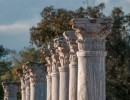
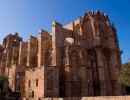
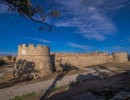
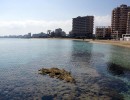
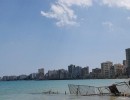

Karavas
Contact Details
Municipality under turkish occupation since 1974
2 Militou St.
2028 Strovolos, Nicosia
Cyprus
Mayor: Nicos Hadjistephanou
Tel.: +357 22516937
Fax: +357 22516941
Email: Karavas.municipality@cytanet.com.cy
Website: http://www.karavas.org.cy
A few words
Introduction
Karavas lies on the north coast of Cyprus, in the occupied district of Kyrenia. All its residents, around 4,000, were forced to abandon their homes and properties in 1974, as a result of the Turkish invasion.
The displaced municipality of Karavas now operates in the government-controlled areas, in Nicosia. Its goals are to tighten the relations between its scattered residents, to promote the area’s history and culture, as well as to reinforce and support the efforts for a just and viable solution to the Cyprus problem, which will enable the return of all refugees to their ancestral homes under conditions of freedom and dignity and which will secure and safeguard their human rights.
History
The area of Karavas has always been inhabited since the Prehistoric times. Remains of the Neolithic Era were found in the area called “Gyrisma”, in “Pano Gitonia”. Clay vessels of the Geometric and Archaic period were also discovered in other areas of Karavas.
Within its municipal boundaries, close to the sea lies the acropolis of the ancient city of “Lambousa”, which prospered from the Classical period up to the Early Byzantine period. The famous “Lambousa Treasures” found in the area, which include objects like jewellery, religious items and silver spoons demonstrate its economic and cultural growth. Items of the Lambousa treasures are kept in the Archaeological Museum of Cyprus, the New York Metropolitan Museum and the British Museum.
The Municipality of Karavas
Karavas was declared a municipality in 1884. The Town Hall was built in 1958 on the main street of Karavas, the “Praxandrou Avenue”, and housed the offices of the Municipality, the Library, the Municipal Theatre and the Market.
Karavas is comprised of four neighbourhoods/parishes; Pano Gitonia, Exo Gitonia, Petrogitonia and Agios Andreas. Each neighbourhood is considered to be a Community and has its own Community President and Council.
Education
Initially, children from Karavas and the neighbouring villages attended classes at the monastery of Acheiropoietos. In the mid-19th C., a separate primary school started to operate and in 1883, a girls’ school. Before 1974 there were two primary schools, the First and the Second Urban School of Karavas that operated as mixed gender schools. There was also a private high school.
Economic Development
Lemon Cultivation
The area had notable economic growth as a result of the trade, the industrial development and the rich agricultural production. In the years prior the Turkish invasion, lemon cultivation was at its peak.
Apart from the ideal weather conditions, it was the water running from the town’s natural spring, irrigating the fertile plains of Karavas, which contributed to the development of the area.
Tourism
Karavas’ ideal climate and beautiful beaches contributed to the creation of small hotels and the development of local tourism. A few years before the Turkish invasion, Karavas had experienced a rapid growth in tourism. Modern hotels were constructed and new restaurants catered to the needs of locals and foreign tourists. Some of them were the hotels “Clearhos”, “Neraida”, Zephyros”, “Mare Monte” and the holiday spots “Fontana Amoroza”, “Prasini Kilada”, “Mili”, “Chrysos Vrahos”, “Platania” and “Pente Mili”.
Crafts
The people of Karavas showed remarkable talent in crafts, like woodcarving and weaving which were organized on a commercial basis. The unique in beauty and technique, lace “fervolites” which used to adorn the houses of Karavas was also used for commercial purposes, in order to contribute to the family budget. In 2017, “fervolites” was inducted in the National Intangible Cultural Heritage of Cyprus.
Churches of Karavas
Before 1974, Karavas had three parish churches, Agios Georgios (St. George), Agia Irini (St. Irene) and Panagia Evangelistria (Annunciation of the Virgin Mary).
The church of St. George was built in the southeast of Karavas, on the site of an earlier monastery, which was destroyed at the beginning of the 19th C. In 1825 the church was turned into a parish church. The existing church was built between 1843 and 1854 and it has a polygonal dome.
The church of St. Irene is built on the mountainside of Pentadaktylos, in the southwest of Karavas. It was built in 1804 by Protosiggelos Lavrentios and his son Hadjinikolas, who was killed by the Turkish ruler of Cyprus during the massacre of July 9th, 1821. The church is a single-naved, vaulted basilica with a polygonal sanctuary.
At the centre of the town lies the largest church of Karavas, Panagia Evangelistria, built in 1906-1917 with the proceeds of a fundraising among the inhabitants, under the supervision of the then mayor Gregoris Hadjilambros.
In the area of ancient Lambousa there are two more churches, the monastery of Acheiropoietos and the church of Agios Evlalios.
The Franco-byzantine church of St. Evlalios was built in the 16th C. on the ruins of an Early Christian basilica of the 5th-6th C. It is dedicated to the first Bishop of Lambousa.
In the church of Acheiropoietos, parts of a previously-built-6th-C.-Early-Christian basilica were incorporated. The main part of the church is of cruciform style and was constructed in the 11th C. The miraculous icon of Virgin Mary is believed to hide the Holy Cloth (Holy Shroud).
The monastery was the religious centre of the area and until 1222 AD was the headquarters of the Lambousa Bishop, who was one of the fifteen bishops of the island. The church used to celebrate on August 15, day of the dormition of Virgin Mary, and August 16, day of the Holy Cloth.
In the Municipal boundaries of Karavas there are the ruins of 14 chapels.
Contribution to the Nation’s struggles for freedom
Karavas’ participation in all the struggles of the Greek Nation for freedom was significant. Noteworthy is the town’s contribution to the 1821 Greek revolution for independence against the Ottomans, when the area’s residents supplied Konstantinos Kanaris with food and money.
Moreover, a great number of young men from Karavas joined the Greek army in the war against Turkey in 1897 and the 1912-1913 Balkan Wars. They also fought in the two World Wars and the 1955-59 EOKA liberation struggle. It must be noted that 65 men from Karavas were recruited as volunteers in the Greek army during the Balkan wars and more than 150 residents of Karavas fought in the Second World War.
The Turkish Invasion
Karavas was the first victim of Turkey’s invasion. The Turkish invaders first landed on the town’s coastal area “Pente Mili”, on July 20, 1974, without encountering any organized military resistance.
The small number of forces of the Cyprus National Guard could not fight off the invaders, who had already landed.
The inhabitants of Karavas, under the leadership of Yiannis K. Kitsios from Karavas, improvised a defensive line extending from the area of “Pente Mili’ up to the hills of the mountain. Their resistance lasted until August 6th, when the Turks managed to capture the entire area of Karavas during the ceasefire.
A total of 58 Karavas residents lost their lives in battle or were killed in cold blood during the invasion. After the capture of the town a small number of residents remained trapped in the town; they were all gradually expelled by August 1976.
Karavas Today
Today Karavas is occupied by the Turkish army and inhabited by Turkish Cypriots as well as settlers brought from Turkey. All of the above reside in illegally-seized Greek Cypriot properties.
All the churches and the chapels have been desecrated or destroyed. The central church of Evangelistria is now used as a mosque. The archaeological site of Lambousa lies abandoned without conservation. Many precious objects and other archaeological treasures have either been stolen or destroyed.
Buildings and other structures have been illegally constructed on many Greek-Cypriot properties, aiming at consolidating the illegal regime, which is systematically trying to wipe out any trace of Greek-Cypriot civilization and the area’s historic past.
The Residents of Karavas today
Nowadays the legal residents of Karavas are scattered in the government-controlled areas of Cyprus and abroad.
Karavas people have organised themselves into associations and clubs with significant activities. The refugee association “Karavas” was established in Cyprus, the “Lapithos, Karavas and Suburbs Association” in the UK, the “Lambousa Melbourne Association” in Australia and the “Lambousa Cypriot American Association” in the USA. Wherever they are, the people of Karavas preserve their customs and traditions. The most traditional event of Karavas called “The Lemon Dance” is organised every year by all the Associations, in Cyprus and abroad.
The main goal of their existence is the assistance to the efforts to return to the occupied areas of Cyprus through a just and viable solution, where all human rights are safeguarded. For this purpose, they organize various events to highlight the history, culture, and traditions of Karavas.
All the Bodies of Karavas in Cyprus, the Municipality of Karavas, and the organisations Karavas Refugee Association, the Karavas Cultural Foundation, the School Board, the Sports Union “AEK”, the Youth Council and the Sea Scouts are housed away from home, at the premises of Karavas Cultural Foundation, in Strovolos, Nicosia. The building was constructed with the contribution of the people of Karavas.
At a glance
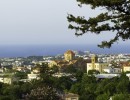
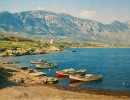
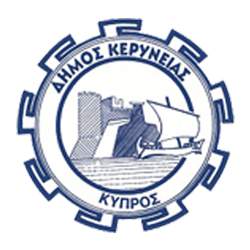
Keryneia
Contact Details
Municipality under turkish occupation since 1974
8 Markou Drakou Avenue
1102 Lefkosia
Cyprus
Mayor: Iosif Violaris
Tel.: +357 22818040
Fax: +357 22818228
Email: info@kyreniamunicipality.com
Website: https://kyreniamunicipality.com
A few words
KYRENIA: A SMALL TOWN IN CYPRUS UNDER MILITARY OCCUPATION BY TURKEY, SINCE 1974
To this day, Kyrenia continues to be illegally occupied Turkish Forces and our Municipality functions in the Government Controlled Areas until we return to our homeland
A brief reference on the facts
- According to the 1964 Land Registry Office Records, Greek Cypriots owned approximately 78% of the privately-owned land in the areas which are currently under Turkish occupation, while persons belonging to the Turkish Cypriot community owned approximately 21%.
- The total population of the Kyrenia District before the Turkish invasion was estimated at 32,586 out of whom only 4,382 were Turkish Cypriots and the percentage of their immovable property was only 12%.
- On July 20, 1974 Turkey invaded the island of Cyprus and occupied 37% of the country’s northern sovereign territory. 170,000 Greek Cypriots, who constituted 2/3 of the inhabitants of the currently occupied area, were forcibly and brutally uprooted and displaced from their homes.
- The inhabitants of the city and District of Kyrenia were the first to be uprooted, leaving behind them a history to be distorted and a civilization to be insensitively destroyed by Turkey.
- The displaced Kyrenians, including women, children and the elderly, were forced to flee to the government controlled areas with only the few possessions they were able to scramble together while fleeing, which were mainly the few items of clothing they happened to be wearing.
- Turkey has implemented a geographic separation of the population along ethnic lines, by forcing both Greek Cypriots and Turkish Cypriots out of their homes.
- Turkey violated international humanitarian law through indiscriminate attacks on civilians, summary executions, torture including rape, pillage and the destruction of civilian property and cultural heritage.
- The properties of the expelled native residents were distributed among the thousands of Anatolian settlers brought to the City of Kyrenia by Turkey, while Turkish businessmen benefited by utilising these properties for profit, and selling them to Europeans and other foreigners, despite rulings by the European Court of Human Rights condemning these practices. This practice has led many foreigners who have purchased stolen property from the illegal occupants, to the European Court of Human Rights, which has repeatedly ruled in favour of the original legal property owner.
- Ungraceful cement hotels and casinos, the uprooting of century old trees for the purpose of constructing roads and the vulgar disorderly housing development offend the environment and litter the picturesque beachfront of the Kyrenia city.
- Houses, churches, public buildings and schools have been pillaged and destroyed to serve the occupation’s regime international crime of cultural genocide and the fundamental Turkish aim to complete the Turkification of the occupied areas and the eradication of any element that would connect them to the past and their legal inhabitants.
- Turkish Cypriots and Greek Cypriots have lived together for centuries and share the same social identity. Many Turkish Cypriots oppose the present situation and supports the return of the settlers to Turkey.
- It is estimated that 57,000 Turkish Cypriots out of a population of 116,000 in 1974 have emigrated since the invasion. Turkish settlers are estimated at around 160,000 compared to the 87,900 Turkish Cypriots that remained in the occupied areas of Cyprus.
The UN General Assembly and Security Council, as well as other international organizations have adopted a series of resolutions condemning Turkey’s aggression against Cyprus.
These resolutions demand the return of the displaced people to their homes in safety and the ascertainment of the fate of all missing persons. In addition, they call for the human rights of all Cypriots and for the independence, sovereignty and territorial integrity of the Republic of Cyprus.
Moreover, the European Commission and the European Court of Human Rights have found the Government of Turkey guilty for gross and systematic violations of human rights in Cyprus.
Any movements by Turkey to promote the de facto recognition of the illegal secessionist regime would be in direct violation of international law and UN Security Council resolutions, especially resolutions 541(1983) and550 (1984).
Under international law, the regime established by Turkey in occupied Cyprus is illegal. The European Courts and the UN Security Council have affirmed the Turkish Cypriot regime has no legal status in the international community.
We the Mayor and the Municipal Council of the town of Kyrenia in exile
In honour of all the Kyrenians who were killed during the war or are still missing; on behalf of all the Kyrenians who were violently displaced from their homes and their beloved town of Kyrenia and our parents who died as refugees away from their ancestral homes,
request your strong support towards our efforts to:
- Restore our fundamental human rights and to be equally respected as European Citizens as per International laws and the European Acquis Communautaire
- Return back to our home town of Kyrenia and our homes and properties in safety, freedom, peace, security, free from Turkish troops, Turkish settlers and guarantors
- Respect, protect, and restore our religious, cultural and environmental heritage, which is an integral part of the European heritage
Please support us in our struggle for freedom and our return home to our historically and culturally unique city.
The Mayor and the Municipal Council of Kyrenia
At a glance
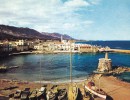
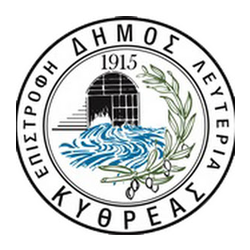
Kythrea
Contact Details
Municipality under turkish occupation since 1974
Ammochostou 37
1016 Nicosia
Cyprus
Mayor: Marios Zampakides
Tel.: +357 22438956
Fax: +357 22438955
Email: dimoskythreas@cytanet.com.cy
Website: www.kythrea.com
A few words
Kythrea is located about 12 km northeast of Nicosia, at the southern outskirts of the Pentadaktylos mountain range, and at the northern border of the Mesaoria plain. The Municipality of Kythrea was founded in 1915, with Nicolaos Kattamis as its first mayor. Its extensive municipal boundaries include six parishes: that of Chrysida, Agia Marina, Agios Andronikos, Agios Georgios, Chardakiotissa and Syrkania. In 1974, the Greek Cypriot population of Kythrea was estimated at about 4,500. The town even had three elementary schools, as well as one high school. The town hall was located at the borders of the Agios Andronikos and Agios Georgios parishes. At present, the temporary offices of the Municipality of Kythrea are to be found within the Nicosia walls, near the Famagusta Gate.
The town was well known for the magnificent Kefalovrysos, the largest spring water source in Cyprus, which flowed out of the northern parish of Syrkania. Since the period of the Venetian occupation, the Kefalovrysos water, which originated from the Pentadaktylos aquifer, powered 32 watermills, as well as irrigated the fields of Kythrea and the crops of the surrounding area. During antiquity, and up to the Middle Ages, it also supplied Salamis, which was once the capital of Cyprus, with water.
Since 1974, the churches of Kythrea have been systematically vandalised and destroyed. The two churches of the upper parishes, Syrkania and Chardakiotissa, were respectively dedicated to Agia Anna and the Virgin Mary (Panagia). The church of the Virgin Mary, which was the largest in the town, has now been turned into a mosque. In the southern parish of Chrysida, the church of the Holy Cross has become a handicraft workshop, while the chapel of Apostle Loukas is dilapidated. Agia Marina, located in the homonymous parish, is used for dance classes, while the monastery of the Virgin Mary (Theotokou) in the homonymous district (part of the Agia Marina parish) is in a military zone. The church of Agios Georgios in the homonymous district is also in a military zone, and it has been turned into a munitions depot. Finally, the church of Agios Andronikos and Agia Athanasia in the parish of Agios Andronikos has suffered inestimable destruction, as the roof has collapsed and the interior is at the mercy of the varying weather conditions. Projects that aim to salvage the damage are now being planned by the bi-communal Technical Committee on Cultural Heritage, as a result of the Kythrea Municipality’s intense efforts. Kythrea also has several other chapels.
Kythrea was inhabited since the Neolithic period, around 4,000 BC. Chytroi is referred to in the 7th century BC as one of the ten ancient kingdoms of Cyprus, while it seems that the city experienced great prosperity during the Hellenistic and Roman period, with inscriptions testifying to the existence of a high school. The 2.08 metre statue of the Roman emperor Septimius Severus, which is currently in the Cyprus Museum, was discovered in the Agios Demetrianos area in 1928 and is the largest bronze statue that has been found on the island. It is also important that the aqueduct, which carried water from Chytroi to Salamis, is dated from the Roman period.
During the Byzantine period, Kythrea became the bishopric of Chytroi. The greatest religious figure of the time was Agios Demetrianos, the Bishop of Chytroi, who managed to repatriate his congregants after being held captive in Baghdad by the Arabs in the 10th century. It is for this reason that he is considered the Holy Guardian of Refugees. Following the Arab raids, the city was built west of its original position, along the flow of the Kefalovrysos water in the valley.
In earlier times, Kythrea was renowned for its production of silk, its weaving and woodcarving, as well as its flour milling industry. It was also known for its cultivation of citrus fruits and its limestone production, as it was surrounded by quarries and limestone manufacturing areas. The town was justly reputed to be a “daskalomana” (mother of teaching), as many intellectuals and educators were born there, as well as doctors, lawyers and other scientists.
At a glance
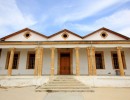

Lapithos
Contact Details
Municipality under turkish occupation since 1974
Prodromou 36
2063 Strovolos
Cyprus
Mayor: Paradisa Mourettou
Tel.: +357 22427733
Fax: +357 22427731
Email: demos@lapithos.org.cy
Website: www.lapithos.org.cy
A few words
Historical Milestones
Situated merely 14 kilometres from the city of Kyrenia, it is built amphitheatrically on the feet of Pentadaktylos, lying among lemon orchards, reaching as far as the sea.
The place never stopped being inhabited. Archaeological finds, ancient tombs, churches and chapels form an unbreakable puzzle of the ancient and Christian world.
The founder of the ancient city of Lapithos, Praxandros, came from Laconia in the Peloponnese. It has been one of the ten Kingdoms of Cyprus and had known fortune and great glory.
Through wars and battles with the invaders, its people managed to survive and turn the town into heaven on earth. In 1878 it was recognized as a Municipality and begun developing rapidly in every account. Its course was arrested violently by Attila, the barbarous invasion of Turks to Cyprus in July 1974. After a hard and unequal battle, Lapithos fell in the hands of the Turks on August 6, 1974.
Its monuments were destroyed, its churches desecrated, its inhabitants driven out. Turkish Cypriots and settlers now want to “rule” it by force.
For the first time since they had been refugees after the occupation, its Greek Cypriot inhabitants were able to set foot on its soil in 2003 going through passport control in order to visit their fathers’ land as «guests», a land that was waiting for them patiently, hurt and stripped bare.
But Lapithos is not a visiting place; it is a place of return.
Lapithos was one of the most important ancient city – Kingdoms of Cyprus. Its history can be traced back in time ranging from prehistoric times to the Byzantine Empire. During the early Byzantine times the city was also known as Lambousa, i.e. fulgent, because it shone thanks to its wealth, prosperity and majestic buildings. Maybe even from the bright light of its harbour’s lighthouse.
The ancient city of Lαpithos was built by the sea, exactly opposite today’s Lapithos and Karavas, where ancient ruins can be seen to this day. That is where the historical Monastery of Panagia Acheiropiitos (Our Lady of Acheiropiitos) and the Byzantine temple of St. Evlalios stand.
Near today’s settlement of Lapithos, have lived people since the Early Bronze Era. Excavations to tombs that take place from time to time have shown that the whereabouts of Lapithos were being used as cemetery from the Middle Bronze Era until the archaic years. The archaeological excavations have brought to light fine pottery samples, metallic objects and hundreds of other works of miniature craft work. In a tomb in Lapithos, the remains of a horse’s skeleton, the oldest to the day in Cyprus have been found.
Important ceramic and bronze objects from Crete come from Lapithos, which implies that ever since the Early Bronze Era had contact between Crete and the northern shores of Cyprus.
The pottery archaeological finds prove that there was a thriving pottery handicraft establishment since ancient times and also that Lapithos was a processing centre for bronze.
According to the ancient tradition, the city of Lapithos was founded by ancient colonists after the mass colonization of Cyprus by the Greeks, during the 13th – 12th century B.C. Praxandros, from Laconia in the Peloponnese was its founder. Together with Cepheus and many colonists came and settled down in the land of the Golgos’ goddess, Aphrodite and they named it Lapithos, from the part of Laconia bearing the same name, i.e. “Mountains of the Lapiths”.
Lapithos was one of the most renowned cities of Cyprus, not only in ancient times, but also later, during the Byzantine period and the rule of the Franks.
In 4th century B.C., Lapithos is mentioned among the nine Kingdoms of Cyprus and its last king was Praxippos. Archaeological finds attest to the existence of the Greek element side by side with the eteocypriot element, while both retained their own characteristics.
During early Christian times (25 B.C. – 250 A.D.) it continued being one of the four provinces of Cyprus of Lapithea to know great substantial advancement.
During Hellenistic and Roman times, the city had striking public buildings. It boasted a Gymnasium, a Theater, a port, a shipyard and many workshops.
Occupations of Cyprus-Lapithos from the Ottoman period to-date
In 1821, Lapithos took part vigorously in the struggles for the liberation of the nation. Many valiant young men from there fought and gave their lives during the great uprising. Among them was Ioannis Karadjas, one of the comrades of Rigas Feraios.
On the 9th of July, 1821, Chadjilias, one of the elders, and 16 more martyrs from Lapithos and Karavas stained the swords of the Turkish oppressors with their blood.
At the coast nearby, at the area called “Asprovrisi” (white fountain) the fire ship captain Constantine Kanaris, who was put up as a guest in the mansion of Georkadjis Paspallas, anchored his ships. The people of Lapithos gave him food, money and other valuable objects lavishly and many young Lapithian men embarked on his ships with other volunteers who wanted to fight in the Greek Revolution.
1878: Lapithos is established as a Municipality with an appointed Municipal Board and Mayor.
In all national struggles, Lapithos contributed significantly: in the Balkan Wars of 1912-13, in the first and second world wars and in the Asia Minor Campaign with the exceptional General of the Greek Army, Ioannis Tsangarides from Lapithos, standing out for his bravery.
During English rule, from 1878 until 1960, Lapithos faced the same destiny as the rest of the island. It offered a lot with its participation to the liberation struggle of 1955-59.
In 1964, because of the intercommunal violence after the Turkish Cypriots’ rebellion, the Turkish Cypriot inhabitants of Lapithos abandoned it on the instructions of Ankara and moved in to the town of Kyrenia.
In 1974, in August 6, during the cessation of arms and before the second phase of the invasion, Lapithos is captured by the Turkish invaders.
A red half moon steals away its sun. The progress of Lapithos is arrested once more, but not so its history, which continues resting between the strong embrace of Praxandros and Dighenis Akritas underneath the stern look of Pentadaktylos.
Religious Landmarks of Worship
The large expanse of Lapithos, the relatively large population and the deep belief and piety of Lapithians are the reasons behind the many churches of the town and several chapels around it.
Six churches divide Lapithos into six parishes, each of which exhibits characteristics of an independent town set within the larger Lapithos community.
In Upper Lapithos there are the parishes of St. Paraskevi and St. Anastasia. In Lower Lapithos are found the parishes of Apostle Lukas, St. Theodore and St. Minas with their own churches.
The church of St. John the Baptist
It is the oldest church in Lapithos, built in the 18th century at the centre of Lapithos.
Its exquisite shrine was adorned with beautiful Byzantine icons dating back in 1973.
In the centre of Lapithos, in an area between the three parishes of St. Theodore, St. John the Baptist and Apostle Lukas, there was the seventh parish of the Municipality of Lapithos which belonged exclusively to the Ottoman community, known as the Turkish quarter. Catering exclusively to the needs of the Turkish Cypriot residents of Lapithos, [this quarter] had its own Turkish Cypriot Community Council President, Turkish Cypriot school and dedicated places of worship with two mosques.
Country Chapel
Small churches, corner stones of the Lapithians’ faith. Desecrated, without bell towers or crosses. The Turkish invaders have turned some to stables for animals and other to dance classes’ halls. In their ruins, live the saints that have refused to leave. The small chapel of St. Marina out at the fields of St. Theodoros’ parish stands looted without icons, without censers.
High up on the Krinia area the small country chapel of Panagia Kriniotissa (Our Lady of Krini) enwrapped in silence, half-rejected. It breathes slowly awaiting every Spring for scents of Resurrection from the white lilies, who, ignorant of war and invasion, continue to grow around it.
Rooted in this Lapithos land, despite what the times have brought, the small Church of St. Paul stands weather – beaten in the middle of the plain, beneath the shadow of Pentadaktylos. From its ruins rise scents of incense and myrtrh.
The beautiful frescoes of these two churches became prey to ruthless time; they still stand stubbornly against the indifference of the invader, against the slaps of wind and rain, patiently under the rays of the burning sun, refusing to disappear from the dilapidated walls.
At the parish of St. Paraskevi, St. Andronicos fixes his eyes to the deep sea opposite and awaits Theseus to drive the Minotaur away. On his doorstep, for many years refugees from Lapithos light the candle of their patience.
The Chapel of the miraculous St. George Exorinos, as it was widely known, is located in the parish of St. John the Baptist, although it is accounted by the Church that it belonged to the parish of St. Paraskevi. The northern courtyard of the chapel defined the boundaries of the two parishes.
In this parish, incantations are heard and also prayers to exorcise evil. Whispers of believers brought by the wind from afar surround the chapel of St. George Exorinos. This last chapel of the miraculous St. Kournoutas, mute and silent, awaits patiently the moment that will curse again the non-believers.
Traces of St. Antonios vanished long ago, but its memory remains a loyal and inseparable companion for the people of Lapithos.
The shrine of St. Mavri withstood thirty years of occupation, before the faithless obliterated its traces from the parish of St. Minas. From high above, Pantocrator is watching silent.
St. Varvara had the same destiny as the chapel of St. Antonios.
Forgive them, for they know not what they do.
Chapels – Cementaries
“These small churches: the tenacity of the people, in the countryside – a tenacity that lasted for centuries”
George Seferis
Airkotissa
“The dead are not asleep – they are listening
the dead are not asleep – they are hurting
who will wash away the shame?”
“The gate at St. Eudokia
sealed the intruder’s shame.
At her doorstep the Angels count
the years of silence – the years of patience.”
Archangel
The Attila storm passed.
Its marks run deep.
From the crumbled walls of silence,
unfolds his fury.
The dead nearby breathe the scent of resurrection.
St. Mamas
Windblown wreckage of the tempest
that covered this land of Saints.
Empty graves, broken crosses.
But the dead are here, living guardians
to this land. Sweet smelling incense of Spring
that always comes – always blooms.
St. George Spiliotis (of the Cave)
Proud and defiant, the chapel of St. George of the Cave high up on the hill, inside a cave overhangs the parish of St. Minas. Without any hymns or prayers, it fights
Education – Educational Schools
Elementary School
Forward-looking and knowledgeable, Lapithians invested in the education of their children.
They learned how to read and write from priests.
Then there were the clandestine schools.
At the end of the 19th and in the beginning of the 20th century operate in Lapithos the first two schools, both of them boys’ schools. One was situated inside the rooms of St. Paraskevi and the other on a tall rock “in the castle” above the Town Hall. The girls’ school of Lapithos that was built in the yard of the church of St. Anastasia by the tall rocky cliffs replaced the small girls’ school that operated from the chambers of the church of Apostle Loucas. Later, around 1945, mixed gender schools were established.
In 1974 in Lapithos there were three schools. The 1st Urban Academy that used to be the 1st Elementary School by the Town Hall. The 2nd Urban Academy in the parish of Ayios Theodoros and the older 2nd Urban Academy, “School high up” as it was called, on the tall rock by the church of St. Anastasia was used as community kindergarten and workshop rooms for the 1st Urban School.
They were all schools with a long tradition that taught Lapithian students the right values and qualities, morality and patriotism. They were imposing neoclassical buildings, stone-covered with capitals reminding them of their ancestry. The schools of Lapithos, along with the rest of the buildings, were special tokens of the town’s culture and the continuity of its long civilization.
Lapithos Hellenic High School
Built in an idyllic green scenery, in the parish of St. Minas, it consisted of two big building complexes that gave it a monumental character and contributed to the beauty of the charming town.
Its story begins in 1910, when, under the auspices of the Metropolitan of Kyrenia at that time, the people of Lapithos and Karavas established the “Higher Hellenic Academy of Lapithos & Karavas”.
Thirty years later, begins the gradual building of the school using donations from the inhabitants and emigrant Lapithians abroad. It first opened in 1943 and made history in Lapithos and the Kyrenia province as a whole.
The Lapithos High School was the centre of cultural events and other activities. Its staff consisted of tireless pioneers of culture who rose to prominence by their creative path, gracing even more this beautiful town.
The flower festivals, ancient drama plays, gymnastics, games and other splendid events that were organized in the High School yard remain alive in the unfaded memory of Lapithians. These games were the sports games for the whole of the Kyrenia province that provided athletes and champions with fair play as their only goal at all times.
On August 6, 1974, in the yard of the proud Hellenic High School of Lapithos among bombardment and fire, the last modern tragedy of Lapithos and its people was performed. Under a red half moon, Lapithos was destroyed.
The Lapithos Reform School
On the coastal front, between the Kanaris Coast and west of Our Lady of Acheiropoietos, the Pancyptian Reform School of Lapithos, the only school in its category, was founded in 1943. Upon the independence of the Republic of Cyprus, the school was renamed to “The Labousis Reform School”. It was abolished a few years after 1974, when new technical legislative infrastructures and the new order did not allow the continuation of its operation.
Post-war, it remained in operation for another five years until the end of 1979, with a new structure, in the abandoned military installations of the English “Salamandra” at Polemidhia in Limassol. The Reform School was known, among the wide masses of the locals of Lapithos and Karavas, as “The Penitentiary of Lapithos.”
According to Englishmen, the School from the beginning of its operation demonstrated impressive results and pioneered among the Commonwealth countries. The then young felons that were inmates of the School (children under 18), needed more care and protection, therefore the aim of the School was educational rather than punishment, which was applied in practice and fully achieved.
Folk Arts
Lapithos was the largest and most important handcraft centre in Cyprus. The main types of craft developed there are Architecture, Pottery, the Production Process of Silk, Weaving, Embroidery, Blacksmithing, Basketry and Woodcarving.
Craft is man’s ability to perform a manual task based on skill, experience and application of technical expertise in practice. The traditional craftsmen were mainly self-taught and acquired skills and experiences working on the job while watching closely the oldest and experienced craftsmen. The possibility of education through books and theory was infinitesimal, but if there was such a possibility, things were even harder because all these traditional artisans, although they were hardworking and industrious, the majority of them were mostly illiterate.
Almost all manual crafts were present in Lapithos and were interrelated and interdependent with each other, so Lapithos, until today, is rightfully characterized as the “largest multi-craft centre of Cyprus”, with unique credentials in projects, objects and structures.
Architecture
Several Lapithians, leading craftsmen of the art of building, were renowned and frequently sought-after manufacturers; they have left behind them projects and buildings that cause admiration, wonderment and many unanswered questions for today’s architects, engineers and contractors. Through the art of building we identify unique and impressive elements of folk architecture, which surround and project it nationwide.
In the stone-build buildings of Lapithos, in addition to the functional interior arrangement, the external appearance had to always be beautiful and impressive with carved arches, large doors with a commanding presence, stone carved projections or indentations called “kouzostates”, iron-secured shutters and stone carved small size openings located at a considerable height called “arseres”, while a significant number of the mansions had their façade interspersed with both the engraved date of manufacture, as well as the gorgeous carved coats of arms.
As expected, the Lapithos craftsmen and master builders were not limited to building only in their hometown. Judging by their achievements, their works testify presence throughout Cyprus. In Nicosia we can still see the Eleneion Elementary School, and the buildings of the hotels Acropol, Nicosia Palace and Regaenas. In the Pafos province the fountain of Pegeiotissa, the Fountain of Lysos, the Church of St. Minas at Neo Chorio, the Church of St. Mamas in Peristerona, Paphos. In the Tower of Limassol we admire the Church of Our Lady of Aipyrgotissa and so much more.
Ceramics – Pottery
Lapithos especially boasts its artistic pottery, the origins of which are lost in the depths of time and reach all the way to 5000 B.C according to the archaeological finds.
Tradition claims that the art of Lapithos’ clay pots was invented by Kinaras or Kinyras and it has been preserved from one generation to the next until today.
The reputation of the Lapithos pots and especially the “glazed” ones is not limited only in Cyprus, but was spread around the world. Taking clay from their land and water from their springs that never tried out, they created in the famous pottery wheel extraordinary art with craftsmanship and imagination.
The famous and one of a kind “glazed” objects found in Lapithos are incomparable works of art, beautiful in colour and style. They constitute the continuation of the Byzantine Medieval Ceramic Art by keeping the feast and the brightness of colours and patterns, as well as the brilliance and magnificence of ceramic objects of the erstwhile, mighty and flourishing Byzantine Empire. The renown industrious, indefatigable and forward-looking potters of Lapithos kept the lead in the production of everyday use pottery, both in Cyprus and the region until the 1950s, when during this period glass and plastic literary invaded our lives, displacing the market in traditional clay object.
Samples of remarkable ceramic art, brought to light by archaeologists, as well as the pottery wheel, constitute a living proof that the art of processing clay was advanced and ingrained at ancient Lapithos centuries ago. Pottery ceramic art from important excavations from ancient times (3000 BC) is the most authoritative and conclusive evidence.
For the ceramists of Lapithos, the continuation of this long tradition is a debt forwarded to future generations, as they love the profession and feel that they have an obligation to continue the art, to preserve it and to deliver it in trust for future generations.
Ironwork – Metallurgy
Ironwork and metallurgy were among the crafts that were extensively developed in Lapithos. The archaeologist’s pickaxe brought to light finds that prove that Lapithos since ancient times was a centre of iron and copper processing.
At the “komodromia”, the blacksmiths workshops of Lapithos, many farming tools and household utensils were made with tremendous skill, such as the much known “tsiakkouthkia”, i.e. pocket knives, as well as knives, axes and sickles that were known as the “Lapithkiotika”or the ones from Lapithos.The blacksmith of Lapithos, under the watchful eyes and supervision of god Hephaestus, sweaty and dirty, relentlessly forges steel in the fire and on the anvil, until it reaches its finished form, ready for use in all sorts of metal tools and objects.
Blacksmithing in Lapithos dates back to ancient times, with evidence and objects that adorn many museums, both in Cyprus and abroad.
Blacksmithing, the art and industry of processing iron, is one of the oldest complex arts; it was advanced in Lapithos and has left its seal up to 1974, but the invasion failed to suspend it and it continues until today.
It wasn’t only the sickles, axes, knives and the Lapithean “tsiakkoudkia” (small knives) manufactured by traditional craftsman. The Lapithean “tsakoudkia” might have been the hallmark for each Lapithiotis, but the amplitude of the generated objects was huge.
Εmbroidery
Important among the folk arts of Lapithos was embroidery. Using a crocheting hook or a needle every woman from Lapithos embroidered her trousseau but they also sold their work in order to contribute to the family income. Using a needle and thread they embroidered the known “xiftita” type, and using a needle they made their famous lacework. Many times over have the Lapithian embroidery received prizes in shows abroad. Among that embroidery stands out the lace by Meropi Siakidou that gave Cyprus the golden medal at the 8th International Biennale of hand-made lace, “pippila” type in 1998 in Italy.
Engaged in the art of embroidery was the female population of Lapithos, especially young girls, who began from a young age to develop into experienced embroiders, weavers and seamstresses.
The magnificent handmade embroidery of Lapithos, the needle-knot, the ravellings, the cross stitch, the coptic, the undulate and the lace were the pride of the Lapithean Embroidery.
Embroidered on tablecloths, pillowcases, scarves, bedding, linens, silks and many more, they [their designs] diverted the best comments on the uniqueness of their art and the mastery of their making.
Apart from pleasure, fair play and competition in good faith between the embroiders of Lapithos, the produced embroidery that was not meant for the dowry of each girl, became an excellent product that was made available for sale at relatively good prices for that era, thus contributing positively to family income.
Small traders of that time, the known “Kentitarides” coordinated the whole production and afterwards they would put the embroidery up for sale in every corner of Cyprus. Some exceeded the Cyprus borders, reaching Ionia-Asia Minor, Venice and England.
The thread, the needle and chisel and in some cases the fabric, were the main items and the raw materials used by the women of Lapithos.
Beyond that, imagination should be employed, a sense of perfection and the skill of each embroider to produce something perfect and admirable.
Only in this way, with needle and thread without fabric, could the unique “velonokompos” (needlework) of Lapithos be made, a quite difficult embroidery that required a specific artistic skill, beauty and perfection; the same for the lovely lace, known as the Lapithean “pipilla”, a unique kind in the whole of Cyprus.
Another distinctive embroidery done on fabric in Lapithos from many years ago, was the “xiftito” (what later prevailed as Lefkaritiko), which initially was on silk fabric and later on linen.
Weaving Craft
Τhe Weaving craft as well as Pottery have in Lapithos a centuries’ old tradition and gave with their masterpieces great fame to the community. In 1955 in Lapithos worked 500 looms. The woven textiles of Lapithos of great variety and art were renowned not only in Cyprus but also abroad where they were exported by the merchants of Lapithos.
Woven textiles from Lapithos were among the more stunning textiles that Cypriot weaving has to show. Weaving was also for many women their main means of subsistence.
Lapithos was famous for its silk and was considered a pioneer not only in silkworm breeding but also in the craft of silk industry. In the old times almost every house bred silkworms. They exported to the exterior cocoons and silk thread.
Woodcraft – Woodcarving
Wood carving, the art of wood elaboration and decoration was developed in Lapithos from a very early time and has to exhibit some extraordinary works. Farming and building tools, household utensils, furniture, ecclesiastical utensils and more, all of them were hand-decorated with beautiful geometric depictions and others from the fauna and flora.
Truly renowned were the marvelous chests from Lapithos, where the women kept their trousseau and no house was without one.
The woodcraft, related to the art of building, predated all other crafts, since natural timber was available straight from the forests and was used in antiquity for the construction of makeshift wooden settlements.
Since the early years, woodcraft in Lapithos, in combination with other crafts such as ironsmith and building, developed largely and was maintained in various forms to the present day, as a remarkable and admirable folk art.
In combination with heavy blacksmiths, shipyards were established and ships were built. “Lapathos is the city with a mooring-place and dockyards; it was founded by Laconians and Praxander”, says historian and geographer Strabo in his report on Lapithos on the year 30 AD.
Especially for the art of goldsmith, important and worthy goldsmiths are mentioned throughout the last century, excellent craftsmen of fineness and detail, since they managed to replicate even the golden pound of the British Crown; the British colonial government took too long to identify them because of the perfection of the replication. The illegal workshop had been set up in a cave on Souli street, between the Town Hall of Lapithos and the Laynadon region.
The Watermills of Lapithos
The watermills of Lapithos, counting nineteen of them in the 1940s and twenty-one prior to that date, were built along the river flow of Kefalovrysos that crossed the parish of St. Paraskevi, continued through the parish of St. John the Baptist and lead to the lush plains of Lapithos.
In historical references (see Cyprus Chronicles, No. X. 1934, page 230) the presence of watermills of Lapithos has been referenced before the Ottoman period in Cyprus and particularly in 1478 AD, where the Italian Jovanes de Negreponte, in a will of the time, referred to owning a mill in Lapithos. This confirms the existence of watermills in Lapithos during the period of the Venetian rule on the island, and even during the years of the French rule, since Latin names are mentioned.
The last three mills were located in the parish of St. John the Baptist, while the rest were in the parish of St. Paraskevi.
The construction and continuous use of so many watermills since the French rule testifies to the existence of a strong industrial activity and developed life in Lapithos that reaches through the depths of centuries and that was due to the ingenuity and industriousness of the Lapithiotes. They found the long-viral power of water and seize every possible way for the benefit of residents and the economy, thus we see mankind today, amid the industrial revolution with difficulty and anxiously, trying to return back to primary energy, like water, the sun, the wind, ie areas were Lapithiotes pioneered hundreds of years ago.
At a glance
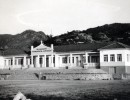
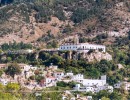
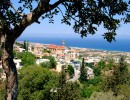
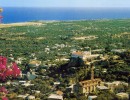
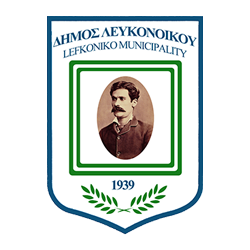
Lefkonoiko
Contact Details
Municipality under turkish occupation since 1974
P.O.Box: 14069
2153 Aglantzia
Cyprus
Mayor: Pieris Gypsiotis
Tel.: +357 22462951
Fax: +357 22462952
Email: lefkoniko@cytanet.com.cy
Website: http://www.dimoslefkonikou.org/
A few words
LEFKONIKO, the Pride of Mesaoria
What shall I first remember about you,
my beloved Lefkoniko?
Your whitewashed houses, your clean yards and gardens
the vast plains of Mesaoria
which were the source and inspiration of all that is deemed good?
And as she so aptly writes about our life in Lefkoniko with her personal style, our poet and our favourite teacher, presbyter Koula Paraskeva:
“On the hanging sheets
the crop is wealthy.
Every home an “euphoria” of goods.
And “euphoria” of joy, gentleness and hilarity.
And above all “euphoria” of self-sufficiency.
They had all they need. Nobody complained.
And “Glory to God“.
Yellow hued rays to warm the earth and her people”
The first house was whitewashed, and thus it was named Lefkoniko
Lefkoniko beloved!
“From all the other villages
you had a different grace
you were the jewel
and Pride of the Messoria!” A. Antoniou
Blessed land of our Lefkoniko!
Greek land, the land of the Achaeans, the Mycenaeans, the heroes of Homer. From the 7th century BC the excavations of archaeologists brought to light a sanctuary, dedicated to the God of Light, Apollo!
True witnesses to the statues that adorn the Cyprus Museum.
Here, the people developed culture for 3,000 years! Our testimonies are the stones, the earth, the statues, the hidden treasures of our land, the language, the traditional ethics and morals, the icons, wonderful examples of Byzantine art. Fortunately, by Divine Providence, the best works are to be found at the Byzantine Museum in Nicosia.
Lefkoniko, in the Franco era, the revolutionist Re Alexis made you her abode!
During the Ottoman domination, Lefkoniko at the beginning of the 19th century was the largest and the richest producing village of Cyprus! In order to understand the difference between Lefkoniko and other villages in terms of the size of their production, it can be said that “Lefkoniko had 139,750 kilos of Cypriot wheat, Athienou 72,960, Aradippou 60,160, Assia 88,960, Morphou 16,000, Dhali 52,480, Lysi 37,760, Trikomo 10,240, Prastio 26,240”.
Then, as they came to our island, the great ones of Old Albion, the first English commander of Famagusta, Captain Swaine, stopped by Lefkoniko during his itineration. It was the most important village of the province, therefore the Governor preferred to spend the night there.
Land of grain, land of richness, depth, blessed.
Honest people, industrious and philosophers, lovers of their land who richly rewarded them with each fruitful year. Full to the brim were the Grain Warehouses that were, and still are, the largest on our island!
In recent years in Agios Fokas, to the north of Lefkoniko, the orchards with the apricots and the ‘kaisia’ began to ripen early.
Humble people, hospitable, people of morals, measure and nobleness, decency, fervent and faith in God.
We had two churches, the Archangel Michael and the Church of our Saviour, additionally six chapels: of the Holy Cross, Prophet Elias, Saint Theodori, Agia Zoni, Agios Fokas and Agios Georgios in Melounda.
Archangel Michael’s church was in danger of collapsing, and thanks to the efforts of the Bi-communal Technical Committee on Culture, together with our Municipality, it was restored, and today our church stands proud and majestic.
People of duty and responsibilities, with aged old values and ideals unparalleled.
Present at every call of and for the homeland.
Many brave men gave their scarlet blood for the freedom of this soil. From the October Events of 1931, in 1945, the EOKA struggle, the inter-communal riots, the battles of Tillyrias and the 1974 Invasion.
I could not omit the participation of Lefkoniko in the Liberation Struggle of EOKA. The Lefkoniko High School, in particular, from where boys grew into active warriors for the cause.
Who could forget the Commander-led operation of the five-member Afxentiou team on November 4, 1955, against the Lefkoniko Police Station, from where they removed all their weapons?
Another event which marked life in Lefkoniko was the burning of our Post Office on 3rd December 1955, during a demonstration by the High School students against the measures imposed by the Governor Sir John Harding. A 5-day curfew followed and our fellow citizens were forced to pay a £2000 fine.
It is also worth mentioning the events during the March 25, 1945 parade, when the police forces in the centre of Lefkoniko opened fire against members of the Popular Organizations who insisted on reaching their clubhouse and dissolving. Three people were killed this day. A dark page in the life of our town.
People of knowledge!
With a crown of education placed upon their heads.
From 1840 there was a Community School in Lefkoniko, which was supported by the students’ parents.
Our High School was not only the pride of Lefkoniko but of all the surrounding area. In 1938 it was founded by a progressive teacher, Andreas Loizidis, as a private school called the “Lefkoniko Commerce College“.
In 1940 the school became communal and was renamed the “High School of Lefkoniko“, which in 1947 was transferred to a new school building on the hill of Profitis Elias and took the name of its benefactor, George Kamintzis. Then in 1960, the “Kamintzis High School of Lefkoniko” and therein
along with Cyprus’ Independence, was called the “Hellenic Gymnasium of Lefkoniko” and later in time “High School of Lefkoniko”.
With her Ionian Rhythm monumental gateway
majestic, imposing, archaic
the pediment, the cornice, the columns.
With the jasmine intoxicating our souls.
Our envious pride was the magnificent Ceremony Hall, which Archbishop Makarios inaugurated on May 26, 1968, one of the few on our island, imposing and magnificent, once again constructed by the donation from our benefactor Georgios Kamintzis
It is worth mentioning the ‘A’ District Festival of Lefkoniko in 1959 with the ancient Greek costumes, with the girls dressed in all white tunics and with carriers on their heads, with their crowns,
and the girls who embodied the Goddess of Snakes
the Minoan Goddess of Fertility, barefoot, with him
a small panther on the head, holding a snake in each hand. The festival was also applauded in GSP, where it was also presented, and it received excellent reviews.
Our last High School Principal was the late Lykourgos Kappas, who also served as Minister of Education and Culture, a remarkable spiritual man, a well-loved man, a nobleman.
People who believed in social justice and humanism!
This is why in our town on 22 November, 1909, the Cooperative Movement was founded.
As people from Lefkoniko, we took pride of our ancestors who were the pioneers of the Cooperative Movement on our island. We commemorate them, because Lefkoniko in the first decades of the 20th century was the zenith of the Cypriot countryside. There, the first Pancyprian agricultural meetings took place; the first Greek Cooperative Agricultural Bank was founded, where the farmers were relieved from the clutches of the loansharks, the “Lefkoniko Co-op Bank“. The two pioneers were Markos Charalambous, a teacher and Ioannis Oikonomidis, lawyer, parliamentarian, director of the Bank of Cyprus, who proposed the Cooperative Societies Act which was passed by the House in 1914.
People who were distinguished for their joy of life, laughter, love for entertainment.
The summer and winter cinema of Fyrilla, Panorama’s summer restaurant and cinema which belonged to Panagiotis Charalambous, the Acropolis Confectionery centre, Panikou Hatzikakou’s “Farmhouse”.
Progressive people, socially contributing, involvement of the community.
The Municipality of Lefkoniko was founded on April 1, 1939. The first mayor was Dr Christos Michalopoulos.
The women of Lefkoniko were well known for their intelligence, dynamism, neatness, honour, homeliness and their worthiness.
“Wherever I go, i see your streets in front of me,
your white houses,
your yards open.
These good Lefkoniko women
compete in household and hospitality” K. Paraskeva
Many have partaken, since the middle of the last century, the benefits of education. Many teachers and lecturers since the last century.
The women from Lefkoniko were also infamous weavers. They weaved their colourful linen always prepared with good taste and enthusiasm.
“What colours, in harmony! Those colours were a miracle!
The white of Lefkoniko
The red of flames
The deepest sky-blue
The green of the grass of the Mesaritiko plains
The yellow hue of the golden wheat
And many embroideries. How many embroideries … “K. Paraskeva.
The dedicated and talented housewives of Lefkoniko, as with the surrounding areas, were unsurpassed in the production of all sorts of pastries, with the specialities ‘τουμάτσια’ (toumatsia), the ‘διπλοπουρέκκια’ (diplopourekkia – double pourekkia), the ‘διπλοπισιήδες’ (diplopissiedes – double pastries) and the ‘τσιπόπιτα’ (tsippopitta – clotted cream pie). They were also distinguished in the making of wedding loukoumia (individual cakes given to guests at weddings).
Lefkoniko was also renowned for the ofton, oven-baked roast that was made with mastery, as well as for their yoghurt.
Indisputably, Lefkoniko took pride for the poet of 9th July 1921, Vasilis Michaelides, the Bishop of Kiti Kyprianos, the Archon Protopsalti Theodoulos Kallinikos and others.
Ultimately, Lefkoniko had a Courthouse, a Hospital, pharmacies, private clinics, a Dental clinic, a Police Station, a cattle-breeding station, a Sanitary station, a Governmental Agricultural office, a nursery, a Kindergarten, a bakery, an Elementary school, a Gymnasium, Clubhouses, bakeries, flour mills, industrial factories, soft drinks factory, furniture makers, gas stations, many commercial shops, goldsmiths, machine shops, olive mills, confectionaries, Municipal Slaughterhouse, dress manufacturing factories, a Power Station. Amongst the excellent craftsmen were those who invented the first threshing machine on our island.
At that time, Lefkoniko was at its peak. It was creating. It was progressing. It was writing History.
Nowadays, the children of Lefkoniko have grown up far away from it, in different directions as refugees. May God help them to live in the land of their ancestors. We have a duty to teach the young about our History and the Culture that we have brought with us. To impart this knowledge to
the next generations. Until the Sacred time of our return.
“The Turk took you and has chained you up
but I carry you in my heart ”
Koula Paraskeva
Zena Lysandrou Panayides
Mayor of Lefkoniko
(Data was obtained from the work of Archpriest Kyriacos Rigas)
At a glance
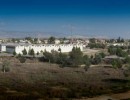
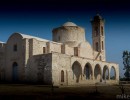
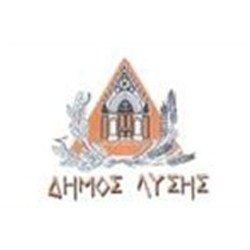
Lysi
Contact Details
Municipality under turkish occupation since 1974
P.O.Box: 40297
6302 Larnaca
Cyprus
Mayor: Andreas Kaouris
Tel.: +357 24661444
Fax: +357 24633330
Email: demoslysis@cytanet.com.cy
Website: http://www.demoslysis.com/
A few words
Ιστορικό
Είναι επώδυνη αλλά συνάμα και παρήγορη η αναψηλάφηση της ιστορίας ενός αγαπημένου τόπου ιδιαίτερα όταν αυτή γίνεται μετά από μια ασύλληπτη τραγωδία που οδήγησε στην κατάκτηση του
και στο βίαιο ξεριζωμό των ανθρώπων του.
Είναι επώδυνη, γιατί σαράντα χρόνια μετά η ελπίδα της επιστροφής ακολουθεί τη μοίρα των Λυσιωτών που τους τέλειωσαν τα χρόνια στην προσφυγιά και φύγανε παίρνοντας μαζί τους στο μνήμα ολοζώντανες τις μνήμες που λαχταρούσαν απεγνωσμένα τον τόπο τους έτοιμες για τη συνέχεια. Είναι επώδυνη ακόμα, γιατί αγώνες και θυσίες αιώνων, κόποι και μόχθοι γενεών άξιων, φιλόπονων, φιλότιμων, φιλήσυχων και προοδευτικών ανθρώπων, αγρυπνίες, προσευχές, ψαλμοί και δεήσεις αγίων και οσίων, εξαίσιες μουσικές, στίχοι, χοροί, θέατρα και αθλήματα και άλλα πολλά ωραία και σημαντικά που ήταν αλληλένδετα με το χώρο και την κοινότητα των ανθρώπων του κινδυνεύουν να χαθούν για πάντα.
Είναι παρήγορη από την άλλη, γιατί στη μακραίωνη μας ιστορία σιδερόφρακτοι κατακτητές ήλθαν και απήλθαν, τραγωδίες και καταστροφές ήλθαν και παρήλθαν, δικαιώνοντας τον ποιητή για τη Ρωμιοσύνη. Η πεποίθηση αυτή θα μας κρατήσει ζωντανούς στον αγώνα για δικαίωση και επιστροφή.
At a glance
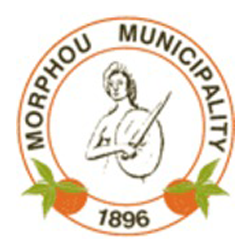
Morfou
Contact Details
Municipality under turkish occupation since 1974
12A Aglantzias avenue
2108 Aglantzia
Cyprus
Mayor: Victor Hadjavraam
Tel.: +357 22447333, +357 22447334
Fax: +357 22762015
Email: dimosmorphou@cytanet.com.cy
Website: http://www.morphou.org.cy
A few words
The Morphou Municipality was established in 1883 and is one of the oldest municipalities in Cyprus. The lovely small town of Morphou is built in the western central valley of Cyprus near Serrahis River and an area of approximately 5.636 acres comes under its administrative jurisdiction. The population of Morphou is currently estimated from 10 to 12 thousands.
Morphou was inhabited since the ancient times, which is evidenced from the numerous settlements that have been discovered and excavated in the town’s surrounding area giving, therefore a testimony of its rich history and great culture. According to the most valid theory about the origin of Morphou’s place name, this is related to the goddess Aphrodite, as one of the goddess’ names has been Morpho, which was how the goddess was worshiped in the ancient Greek world, mainly in Laconia in Peloponnese. This theory connects, consequently, Morphou to the Laconians, who settled possibly in the western part of the big central valley of our island.
The small town of Morphou experienced a big growth mainly due to its prospering economy because of its arable land and the endless citrus plantations in the area. These sources made Morphou the leading town in culture, letters, arts and sports.
However, on 16th August 1974 upon completion of the second round of the Turkish invasion of Cyprus, Morphou was, unfortunately, conquered by the Turkish occupying forces. The legitimate inhabitants of the area were forced to leave their home and to move to the southern areas of Cyprus. Since then, the Morphou Municipality has been devoted to the struggle for a fair and viable solution to the Cyprus Problem in order to enable all the displaced people to go back to their fatherland.
From 1974 onwards, our Municipality has considered the struggle for return and justice its priority. Morphou Municipality becomes also active in culture-related events but also in our country’s religious traditions aiming at keeping alive our occupied land’s memory.
As part of such activities, our Municipality has so far twinned with nine Municipalities: five Municipalities in Greece (Sparta, Kalavryta, Ermoupoli, Orestiada and Missolonghi) one Municipality in France (Saint Cyr Sur Loire) one Municipality in the United Kingdom (Barnet) and one Municipality in Malta (Zurrieq). Last but not least in 2008 the Morphou Municipality twinned with the Muncipality of Slovenj Gradec in Slovenia.
Despite the problems experienced by our Municipality, we are pleased to say that all our nine twinned cities are absolutely active. We are constantly and regularly in contact with these nine Municipalities and despite the fact we are twinned with some of these towns for more than 20 years, the friendship ties have become stronger instead of being damaged in so far that we feel them like our real brothers.
Our Municipality participates in almost all the big events organized by our twinned towns and we have launched many events (cultural, photography, youth exchanges, dancing groups, choirs and so on and so forth) in all the above stated towns without exception. On the other hand, all the nine twinned towns honour with their presence our annual event against the Turkish occupation, joining forces to ours in the struggle for freedom and justice, while they have been invited and participated in many other cultural events organized by our Municipality in Cyprus.
Further to the twinning with the above nine towns, the Morphou Municipality has concluded exceptional relationship with many other towns too, while participating in international and other organizations. Our Municipality enjoys membership in the Network of Cities Aphrodite and in the United Nations Peace Messenger Cities chaired by our Municipality.
At a glance
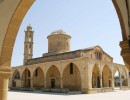
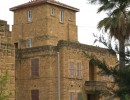
LINKS
Contact us
Address:
78, Rigainis Str. CY-1010 Nicosia
P.O.Box 22033, CY-1516 Nicosia, Cyprus
Tel: +357 22 445170
Fax: +357 22 677230
Email: endeky@ucm.org.cy
